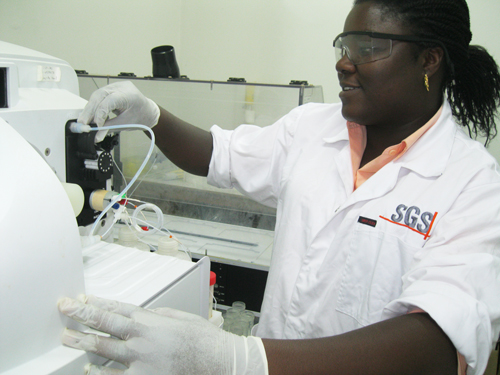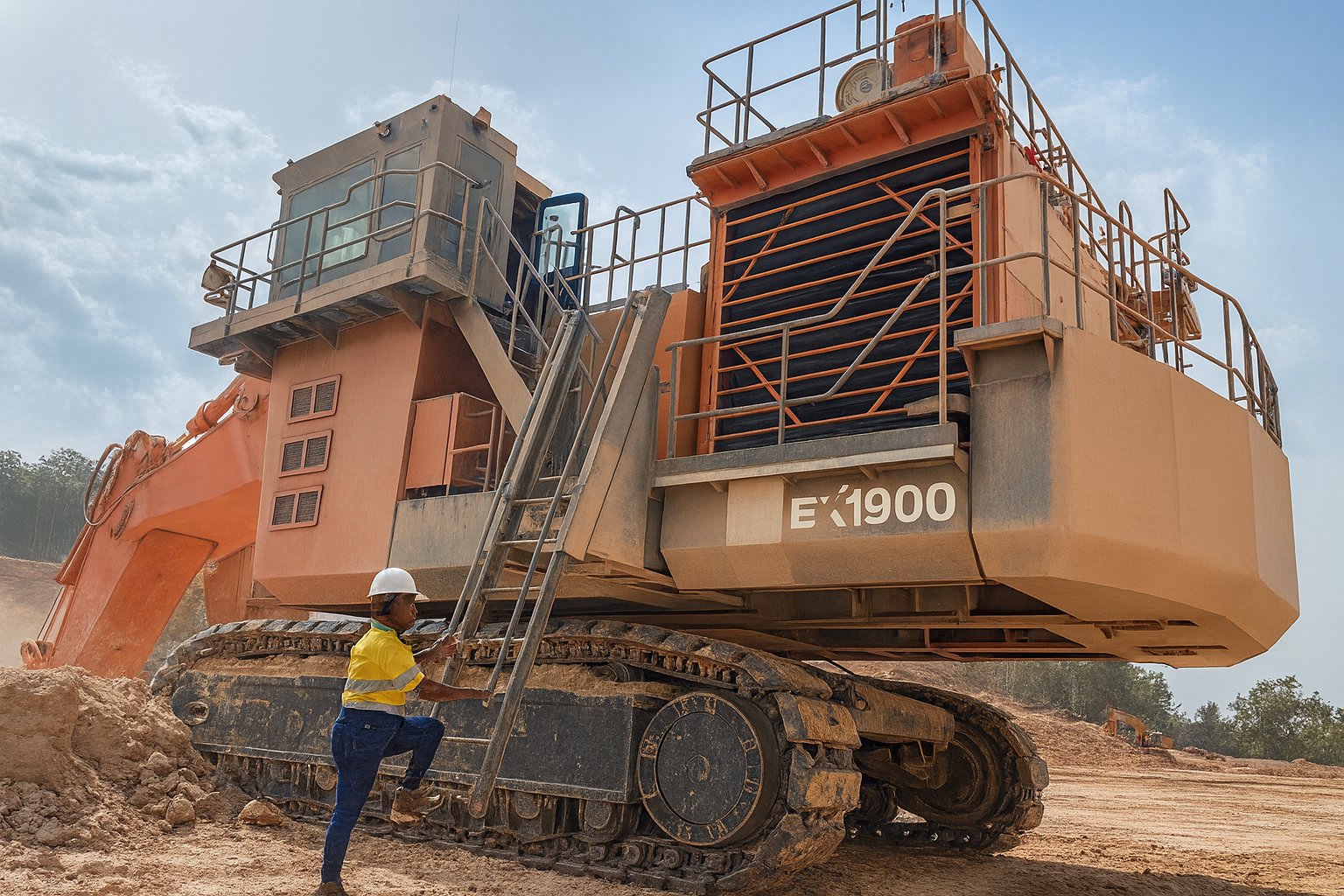
It is no exaggeration to say that the future of African economic development, in the near to mid term at least, is inextricably linked with its mineral resources. It is these that will provide the capital that can be re-invested in building a sustainable business infrastructure whether in manufacturing, services or technology and innovation. Currently, the most important commodities in the African context are platinum group metals, coal, gold, iron ore, diamond, copper, manganese ore and mineral sands, and in Tanzania one could add its diamonds and other precious stones, rare earths, phosphate and a number of niche minerals.
For each and every one of these commodities, sampling is required at all stages in the value chain from exploration, through face sampling, blast-hole sampling and in-mine grade control, ore processing and handling, metallurgical sub-sampling, sub-sampling in the laboratory – and finally quality control and standards used in the analyses of the final samples.
Best practice at each of these stages is required to maintain value. Exploration and development companies have their own procedures based upon operational experience informed either by sampling theory, or for commodities like iron ore, non-ferrous metals, sulphide concentrates and coal, by procedures based upon ISO standards. Nevertheless over the years a number of codes have been introduced to ensure adherence to good sampling and analytical practice.
For mineral resource and reserve estimates the South African Code for reporting of Mineral Resources and Reserves (SAMREC), presents guidelines for sampling governance that have been a reference for other African nations in developing their own regulations. In 2003 AMIRA (an independent association of minerals companies which develops, brokers and facilitates collaborative research projects) initiated its P754 research project: Improving Metal Accounting. As a result of global research work, the Code for Metal Accounting was published in its current version in 2007. This was sponsored by international mining companies and covered metal accounting from ore deliveries to final product. This Code has been adopted by several companies and used as a basis for auditing metallurgical operations.
With regard to quality control and accreditation, one requirement is the use of certified reference materials to ensure that the final analyses are accurate and have an acceptable level of precision. In the wake of various financial scams, the so-called Sarbanes Oxley legislation was passed in the USA requiring publicly listed companies to be transparent in reporting factors impacting on their financial statements and this includes year-end stocks. This requires reporting of these stocks within a Confidence Interval, which, in turn necessitates estimates of the uncertainties in sampling, mass measurement and analysis of these stocks.
So best practice in sampling and the availability of laboratories that are internationally accredited are essential to the mining industry. This is where SGS Tanzania comes in, as a part of the world’s leading inspection, verification, testing and certification company. The Swiss based company Société Générale de Surveillance was established in 1878 and today is recognised as the global benchmark for quality and integrity, with more than 75,000 employees and a network of more than 1,500 offices and laboratories around the world.
SGS was incorporated in Tanzania 50 years ago. It is the country's leading inspection, verification, testing and certification company with more than 300 permanent employees operating in Dar Es Salaam, Tanga, Mtwara, Mwanza, and at mine-sites spread throughout the Lake-Zone area, and any other location where need arises.
SGS Minerals Services’ laboratory, today trading as African Assay Laboratories (AAL), a spin-off company that serves the mining sector in Tanzania and the surrounding East and Central Africa neighbours, was opened in Mwanza in 1997. It offers geochemical analysis to meet mineral testing needs in Tanzania. Since then SGS has also established dedicated onsite laboratory operations for Tanzania’s Golden Pride mine, Geita gold mine, Bulyanhulu gold mine, Tulawaka mine, North Mara mine, and more recently the Buzwagi gold mine. Analysis of drill samples and geochemical data is now all carried out at the Mwanza laboratory.
This type of testing is essential for the commercial success of any project, and a key element of the ongoing assessment that is required right through from pre-feasibility to quality control in production. It is the basis for operational decisions, and also for investors and potential investors, so its importance cannot be exaggerated. However these days investors don't just need to satisfy themselves as to the financial viability of the project – they need to be reassured as to the environmental and social compliance that Tanzania insists on. In 2003, SGS also set up an environmental testing laboratory in Mwanza, supporting its clients by testing the quality of water and effluents they release in the surrounding environment.
As far as Tanzania is concerned mining companies' environmental departments are responsible for the mines complying with the requirements of The National Environment Management Council (NEMC) , which came into being in 1983. NEMC was established with a broad mandate in response to the national need to oversee environmental management issues and also implement the resolutions of the 1972 Stockholm conference, which called upon all nations to establish and strengthen national environmental councils to advise governments and the international community on environmental issues. Tanzania’s mining regulatory framework was updated in a new mining code in 2010 that aimed to maximise the retention of value from mineral exploitation within Tanzania. “We still see the regulatory framework as stable, although investors will have to see the government’s point of view and work with it,” says SGS Regional Managing Director for East Africa Samuel 'Kiki' Gyan.
The Mwanza facility is ISO/IEC 10725 accredited. It has access to the SGS global laboratory network that provides first-class geochemical analysis, including ICP-AES analysis, to mining and exploration companies throughout Africa and around the world, and uses the same global testing methods, analytical codes, and sampling preparation techniques. AAL employs two thirds of the 500 trained staff that work for SGS in Tanzania. It is an asset of which Gyan is very proud: “We can offer our clients a really broad suite of analytical techniques including inductively coupled plasma-atomic emission spectroscopy (ICP-AES),” he says. Among the standard on-site analytical capabilities is sample preparation (all samples are reduced to pulp for ease of transportation). Of particular relevance to the gold mining sector are fire-assay (considered the most definitive technique for gold analysis), acid digestion, accelerated cyanide leach and cyanide BLEG leach analyses.
During the course of 2014, faced with a slowdown in the rate of new mine start-ups since 2009, the situation will continue to be challenging, but Tanzania is one of the East African countries with the greatest growth potential, Kiki Gyan believes. “Tanzania's economy has been expanding at a rate of six to seven percent over the last couple of years and even at its depth the global financial crisis only reduced growth to five percent. The Oil and Gas sector – already serviced by one of our business units – will expand rapidly, opening up the possibility for SGS to bring in its upstream and industrial services into the country. These factors provide a healthy economic outlook for the country and therefore Tanzania sits well with our overall strategy.”
Written by John O’Hanlon, research by Candice Nice
DOWNLOAD
 SGS-Africa-Mining-W1-Feb14-Bro-s.pdf
SGS-Africa-Mining-W1-Feb14-Bro-s.pdf












